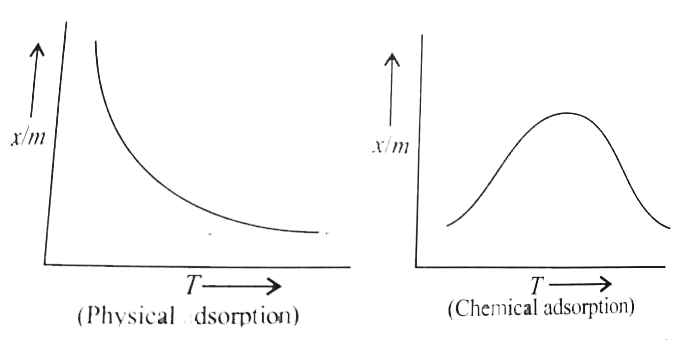Why do physisorption and chermisorption behave differently with rise in temperature ?
Behaviour of physisorption and chemisorption on increase in temperature can be explained on the basis of nature of forces present to bind their particles. Physisorption involves weak van der Waals' forces which weakens with increase in temperature.
Chemisorption involves formation of chemical bond which requires activation energy hence, it is favoured by rise in temperature.
Topper's Solved these Questions
Similar Questions
Knowledge Check
- Question 1 - Select One
Assertion: In physisorption, adsorption increase with increases in temperature.
Reason: Physisorpation is of exothermic nature.AIf both assertion and reason are true and the reason is the correct explanation of the assertion.BIf both assertion and reason are true and the reason is not the correct explanation of the assertion.CIf assertion is true but reason is false.DIf assertion is false but reason is true.
Physical and chemical adsorption respond differenlty with a rise in temperature. What is this difference and why is it so? lt brgt

 View Solution
View SolutionGiven an example where physisorption changes to chemisorption with rise in temperature. Explain the reason for change.
View SolutionGive an example where physisorption changes to chemisorption with rise in temperature. Explain the reason for the change.
View SolutionWhy dows physisoption decrease with increase of temperature ?
View SolutionGiven an example where physisorption changes to chemisorption with rise in temperature. Explain the reason for change.
View SolutionWhich of the following statements is not true?
a. Both physisorption and chemisorption are exothermic.
b. Physisorption occurs with increase of free energy.
c. Physisorption requires low activation energy but chemisorption requires high activation energy.
d. The magnitude of chemisorption increases and that of physisorption decreases with rise in temperature.View SolutionWhy does physisorption decrease with the increase of temperature ?
View Solution

